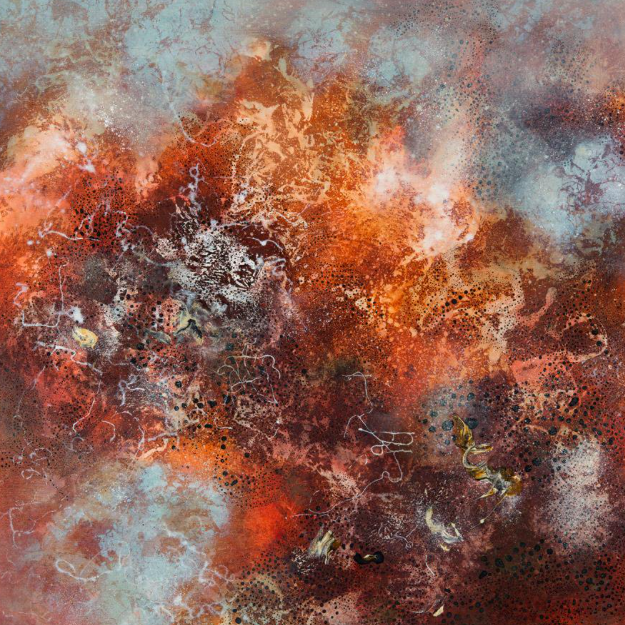This post illustrates how we can use art and science to help students express artistically and interpret their scientific understanding and knowledge about the Big Bang and the formation of the universe. This educational understanding corresponds to the Victorian Curriculum learning outcome (VCSSU129).: The Universe contains features including galaxies, stars and solar systems; the Big Bang theory can be used to explain the origin of the Universe.
If you like art, love space and are a teacher- read on.
A spectacular example to show your students to inspire about art + science + universe is “Creativity and curiosity: when art meets science”. This mobile exhibition is currently touring the UK and currently on view at the National Space Centre Leicester, for more information click here. Fig 1. was created by Ione Parkin who as an artist “has become fascinated by ideas about the early formation of the universe” (Parkin and Ione. p3. 2016). The article in full is available from A&G • December 2016 • Vol. 57 •
Fig 1. Ione Parkin RWA for Creativity and Curiosity.

The project used current academic research from 4 scientists, one of the scientists Denis Erkal is quoted as stating: “One of the most striking aspects of this collaboration is how similar science and art really are. While the methods of scientists and artists are different, we are both trying to use our work to explore the world around us and our place in that world.”
So, how can this particular project, art, and space all combine to complement a descriptor in the Victorian Curriculum section called Earth and Space Sciences? The need for students to be able to express their findings and their wonderings about the universe is crucial to teaching. I mean, who hasn’t looked into the heavens and wondered about the stars, or the Milky Way?
References:
http://victoriancurriculum.vcaa.vic.edu.au/science/curriculum/f-10#level=9-10
Parkin, Ione (01/12/2016). “Creativity and curiosity: when art meets science”. Astronomy & geophysics : the journal of the Royal Astronomical Society (1366-8781), 57 (6), p. 6.28.
